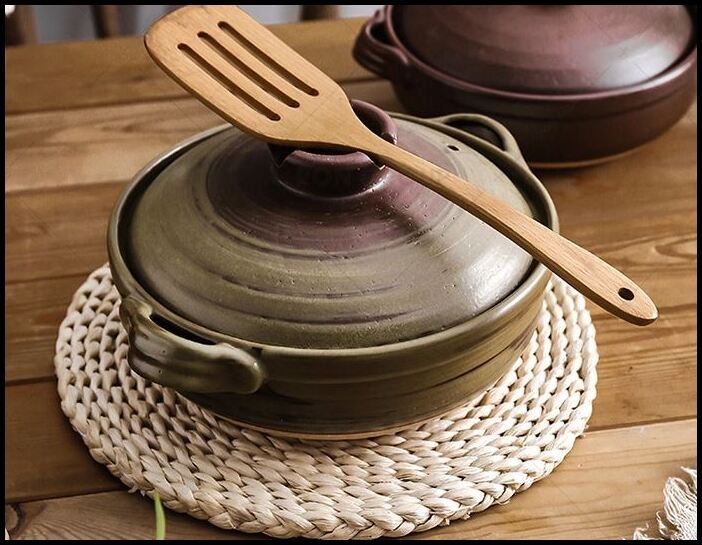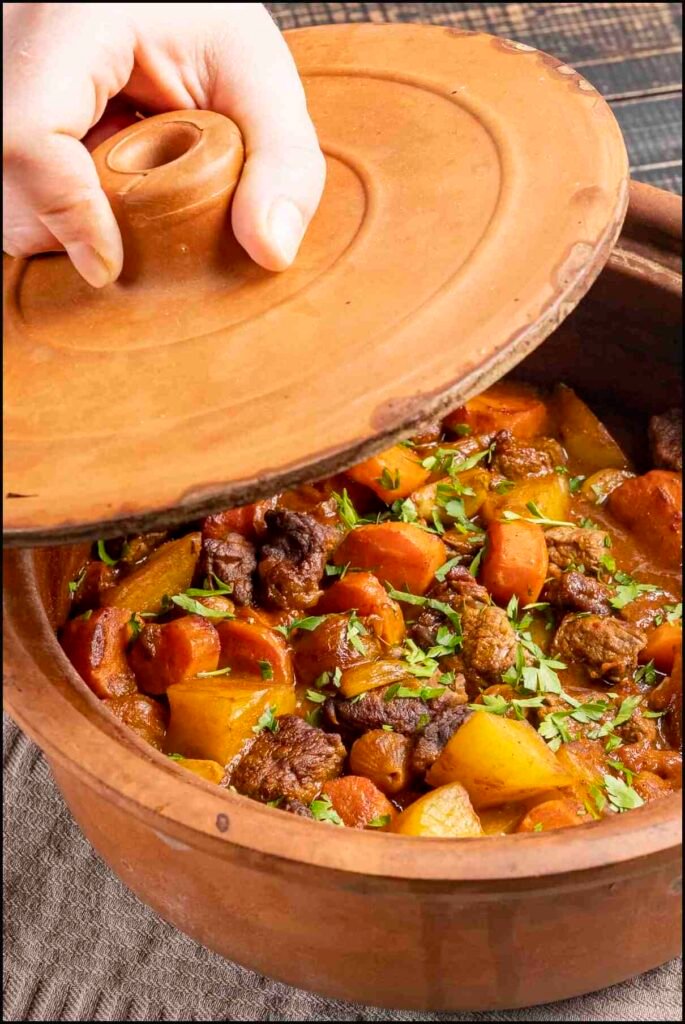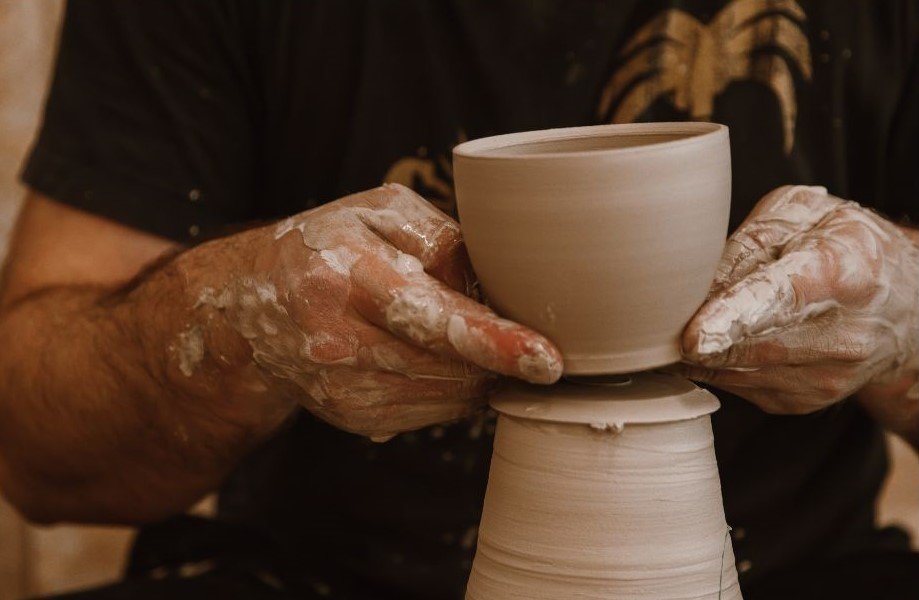For millennia, many civilizations have utilized terracotta—which translates as “baked earth”—for cooking. Terracotta pots appeal for their simplicity, robustness, and distinctive cooking experience. From prehistoric societies to contemporary kitchens, terracotta pots remain a preferred and flexible choice for foodies.
Benefits, Applications, and Maintenance of Timeless Art in Cooking with Terracotta Pots:
This article offers a thorough guide to those ready to try this age-old cooking method. It investigates several aspects of terracotta pots for cooking: their history, advantages, adaptability, and care.
1. What is terracotta pots ?
Made from natural clay, hand- or mold-shaped, then kiln-fired to solidify, terracotta pots are The end effect is a porous reddish-brown pot that lets moisture and air flow across its walls. Especially in slow-cooking methods, the clay’s porosity and excellent heat retention make terracotta the ideal medium for cooking.

Although ceramic pots have been used all over—most famously in Mediterranean, Indian, and Latin American cultures—modern culinary aficionados are rediscovering their appeal for their capacity to impart rich, earthy flavours to food.
2. Cooking with Terracotta Pots: Benefits
There are several advantages of terracotta pots that might improve your cooking experience:
A. Even Distribution of Heat
One of the best benefits of cooking with terracotta is equal heat distribution. Unlike metal pots, which can contain hot areas, terracotta uniformly heats food, enabling consistent cooking. This guarantees balanced development of the tastes and textures in your meal.
b. Retention of moisture
Terracotta’s porous quality lets it gradually absorb and release water as the food cooks. For slow-cooked foods, including stews, soups, and braised meats, clay pots are therefore perfect. Tender, delicious meals come from food kept juiced and from not drying out, thanks to moisture retention.
c. Adds a distinct taste.
Terracotta pots improve the whole taste sensation by adding a faint, earthy flavour to the dish. This quality is particularly evident in meals requiring extended cooking times since the flavours marry wonderfully with the clay.
d. Better Cooking in Health
Terracotta is natural, non-toxic, and free of the chemicals sometimes present in modern cookware. Using clay pots guarantees that your food stays free from harsh metals and pollutants. Moreover, the uniform heat distribution helps to create healthy meals by lowering the demand for too much fat or oils.
e: adaptability
From baking bread to cooking meats, stews, and even desserts, terracotta pots find usage in many different ways. Versatile tools in any kitchen, they can move from stovetop to oven.
f. Environmentally Positive
Terracotta is made from natural clay, which is biodegradable and ecologically beneficial. Terracotta pots are more sustainable and support environmentally friendly living than metal or plastic cookware, which leaves a higher carbon footprint.
3. Various Cooking Terracotta Pot Types

Different forms and sizes of terracotta pots fit various kinds of cooking. Popular terracotta cookware choices include:
a. Casuela (Spain)
Common in Spain, a cazuela is a shallow, wide clay container. It’s ideal for slow, even heating meals like baked casseroles, stews, or paella. Though they can also be used on the cooktop with a heat diffuser, cazuelas are typically used in the oven.
b. Tagine ( North Africa)
Conical lids define the Moroccan terracotta pot known as the tagine. This unusual form lets steam rise and condense, drizzling back onto the food and producing moist and delicious meals. Vegetables, meats, and stews, all slow-cooked in tagines, work well.
c. Romertopf (“Germany”)
The German clay pot known as Romertopf features a lid traditionally used for baking bread, meats, and vegetables. Soaking the pot in water before use locks in the food’s natural fluids and creates a moist cooking environment, producing soft, delicious cuisine.
d. India’s biryani pot
Terracotta pots are used in Indian cooking to make biryani and other rice-based dishes. The slow cooking method locks in the flavors of spices, meats, and vegetables, and the pot’s porous nature helps steam the rice evenly.
e. Bean pots
For slow-cooking beans, soups, and stews, terracotta bean pots—tall, spherical pots—are perfect. Their shape lets the beans simmer gradually and thoroughly, producing a creamy, well-cooked texture free of scorching.
4. Cooking With Terracotta Pots: Techniques
Cooking using clay is unlike using contemporary metal cookware. These basic ideas will help you maximise your terracotta pot use.
a. Pot’s seasoning:
Terracotta pots must be seasoned before they are used for the first time. Seasoning reinforces the Pot over time and helps the clay absorb moisture uniformly ,Season: To season.
For at least thirty minutes, submerge the Pot—and its cover—in water.
Let it fully air dry.
Olive oil should be rubbed into the Pot; then, roast at a low temperature (around 200°F/93°C) for a few hours.
b. Pre-soaking Not Before Cooking:
Terracotta pots have one unusual feature: they must be soaked in water before every use. Let the Pot soak for at least 15 to 20 minutes so it may absorb moisture. This keeps the Pot from shattering from abrupt temperature changes and allows it to retain moisture throughout cooking.
c. Progressive Heating:
Gradual heating of terracotta pots helps prevent thermal shock and consequent breaking. Always use a heat diffuser to avoid direct contact with solid heat while using the Pot on a stovetop. Put the saucepan in a chilly oven and let it progressively warm as it heats.
d. Low and slow cooking:
Terracotta pots are used for low and slow cooking. Stews, casseroles, and braised meats especially benefit from the consistent, uniform heat distribution. Avoid cooking over high heat, as this can crack the Pot.
e. Maintenance and Cleaning:
Careful cleaning of terracotta pots guarantees lifetime:
Always gently brush your terracotta pot with warm water. Avoid soap, as porous clay absorbs it and alters the taste of subsequent meals.
Before you store the Pot, let it air dry totally.
Your terracotta pot could naturally get patina over time, which improves cooking qualities.
5.Popular Foods Made in Terracotta Pots
Cooking in clay pots provides a distinctive gastronomic experience, adding moisture, taste, and texture to meals. Popular foods ideal for terracotta cooking are these:
a. Tagine Moroccan Chicken
Moroccan chicken tagine is a classic North African meal made slowly using a combination of aromatic spices, dried fruits, and vegetables. The conical lid of the tagine pot guarantees that the food stays wet and tasty throughout cooking.
b. Paella Spanish seafood
Seafood paella becomes a show-stopping meal with a terracotta cazuela. The pot’s uniform heat distribution guarantees adequately cooked rice, and the clay gives the seafood a faint earthy taste.
c. Indian Biryani, Dum
The slow-cooked flavours of a classic dum biryani come alive in a terracotta pot. The sealed Pot traps steam, letting the rice cook uniformly and infuse with aromatic spices and meats, resulting in a fragrant and delicious meal.
d. Kleftiko, Greek Lamb
The Greek lamb kleftiko is another meal that gains from slow cooking in clay. The pot traps in the moisture, so the lamb falls off the bone and gets soft. A Mediterranean staple, cooked with vegetables, herbs, and a trace of lemon, this dish is
e. Made from Homestead Bread
Bread baked in a Romertopf or similar terracotta pot comes out soft with an artisan-style crust. The bread gets its distinctive texture from the steam created by the moisture kept in the clay pot.
6. Choosing Best Terracotta Pot?
When looking for a best terracotta pot, you should give some critical thought :
a. Clay Quality:
Select terracotta pots composed of premium, naturally occurring clay free of chemical additions. The pure clay guarantees that your food will stay free from toxins and keeps the actual advantages of terracotta cooking.
b. Glazed against unglazed
Some clay pots are glazed on the inside. Glazed pots lose some of the moisture-retaining qualities of unglazed terracotta, even if they are easier to clean. Unglazed pots are perfect for slow-cooked, moisture-heavy meals, while glazed pots have more flexible uses.
c. Size and Form
While deciding on the size and form of your pot, consider the kinds of foods you intend to make. Bigger pots are fantastic for stews and meats, while smaller cazuelas or tagines are perfect for side dishes or individual portions.
d. Compatibility with Heat Sources
Ensure the terracotta pot fits your heat source—an oven, cooktop, open flame, etc. Certain pots are not suitable for high temperatures or direct heat.
7. Maintaining Your Terracotta Pots
Good maintenance and care will guarantee that your terracotta pots last many years. Use this advice to extend the lifetime of your cookware:
Avoid extreme temperature swings. Pour cold water into a heated pot, or never move a hot terracotta pot to a cold surface.
Keeping the pots dry will help to stop mildew or mould from growing.
To keep your terracotta pots in the best shape, routinely re-season them.
In essence, cooking with terracotta pots is an artistic endeavour.
Cooking using clay pots is an artistic expression anchored in history and custom rather than only a technique. These pots bring particular advantages that transform essential ingredients into culinary masterpieces: even heat distribution, moisture retention, and a particular flavour.
Terracotta pots provide a classic, earthy character to the kitchen whether you’re cooking Moroccan tagine, Indian biryani, or experimenting with new recipes. Understanding their background, appropriate use, and care can help you enjoy the age-old terracotta cooking craft for many years.


